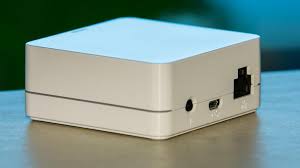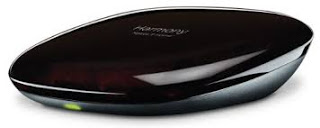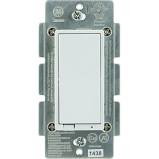In my
previous post, I demonstrated the voice-controlled automation in my home. In this post, I go into some of the details of how we set up the system. It’s complicated stuff, however, so only attempt something similar if you have the skills and patience or know someone who does, which includes anyone under the age of 30.
The most important thing is–and you might want to write this down and stick it on your Amazon Echo–DO NOT CALL MITCH WHEN THIS DOESN’T WORK.
Hardware Requirements
It starts with Amazon Echo, which can be purchased in several configurations. The original Echo has an onboard speaker. If you already have a Bluetooth speaker that you like, or if you can be satisfied with a very small speaker, you can buy an Echo Dot instead. We went with a full-fledged Echo in our living area and a Dot in our bedroom. Note that they work together. I can speak to either the Echo or the Dot and control any of my devices.
Echo doesn’t work directly with many home devices. It usually requires an interface, and these generally take the form of a smart home hub. We chose the Samsung SmartThings hub because it has so much flexibility.

But SmartThings doesn’t interface with my Lutron shades, so I had to purchase a second hub to control those functions.

For each of our two televisions, I purchased a Logitech Harmony hub. Echo doesn’t interface directly with that hub, but SmartThings does.

Next, I purchased smart switches for all my lights. The SmartThings hub communicates with the switches via a radio technology known as Z-wave. I used four types of switches:

Because we would be adding a lot of traffic to our old wireless router, I purchased a new one:

Labor
An electrician who owed me a favor installed my switches. For the number of switches demonstrated in the video, plus a few more, an electrician would charge between $500 and $700.
Software
The software is all free. I used the following:
On my PC
Loaded Logitech Harmony app
bookmarked Amazon Alexa website
bookmarked IFTTT website (IF This Then That)
On my iPhone and iPad
Programming and Implementation
This is where the fun began.
Light switches
I used the SmartThings app on my phone to pair with and name each light switch. I used the Amazon Echo website to link my Echo and my Dot with the SmartThings hub. Then, I started talking to my lights.
Lutron shades
I used the Lutron Caseta app on my phone to name and pair up with my motorized shades. I went to the IFTTT website to pair my Amazon Echo devices with the Lutron Caseta hub. Then, I started talking to my shades.
Entertainment system
I followed the directions that came with my Logitech Harmony hub to set up my entertainment systems in the living room and bedroom. I set up commands in the SmartThings hub which mimic the commands in my Logitech Harmony hub because Amazon Echo does not speak directly to Harmony. I went to the Amazon Echo website and paired with the SmartThings hub again. Then, I started talking to my entertainment systems.
Final Thoughts
Amazon Echo is currently designed to deal with things like light switches and not with things like television channels. So I had to play with the names I chose for each function. For example, when I tried to make up a command called “channel 6” it didn’t work. When I renamed it “switch 6” it worked fine.
Consider this a high-level summary of how this setup works–by no means enough information for someone to build a system. A technical mind is required in order to pull something like this off. And obviously, the financial costs are significant.
Good luck!








lucky you! i'm still wondering how i'm going to pay to convert my tub into a more accessible shower.
Don't I know it–in so many ways.
These are the techy things I still LOVE to do. Luckily I don't need all of this control — yet. But I would love to be able to set up turn-key systems that would only need the electrical components installed and everything plugged in. Hmmm.
You're not the only one thinking that way 🙂
Ditto Mary Ellen. I have been dreaming of automatic shades for a year now! Cool information. I think half of it zipped right over my head but I can reference it later at your blog & I'm happy to have it. I do already have a cool doorbell I can answer from my cell phone because it takes me forever to get to the door. The fish-eye lens on those things is amazing.
I just saw that the new Pebble watch will interface with the Alexa system.
Mary Ellen, based on my reading this morning, Amazon echo will not interface with the pebble watch, but rather with the pebble clip–on device which won't come out until 2017.